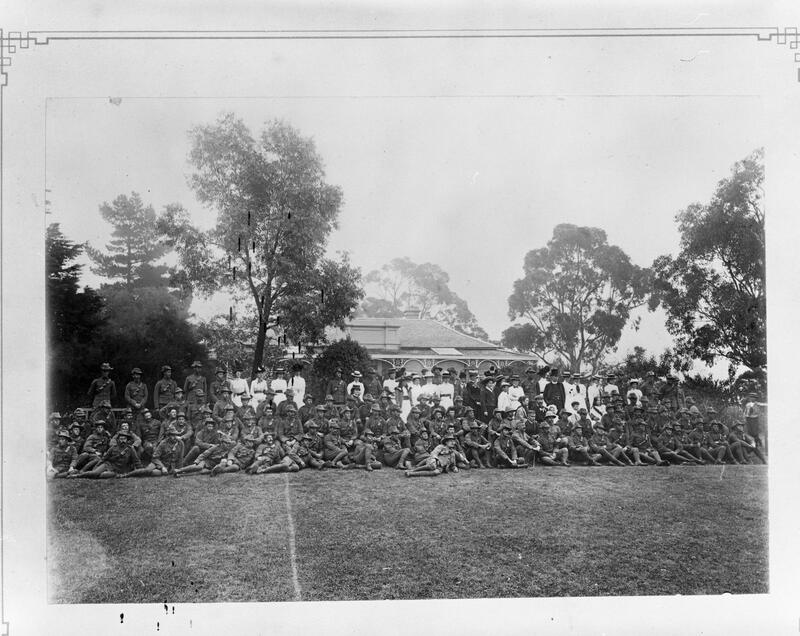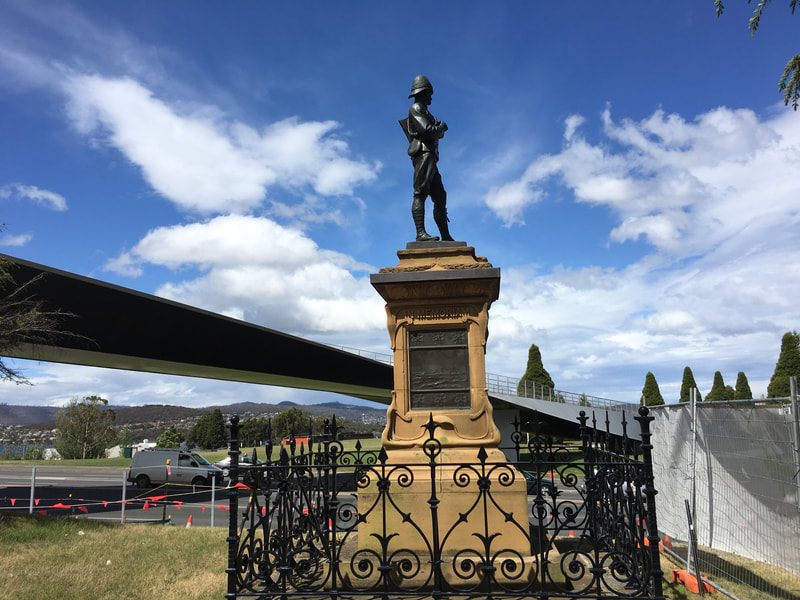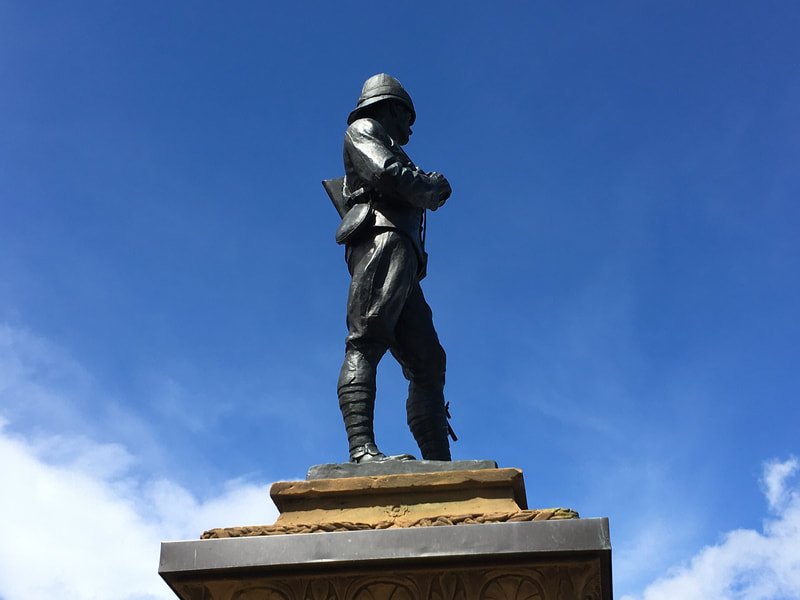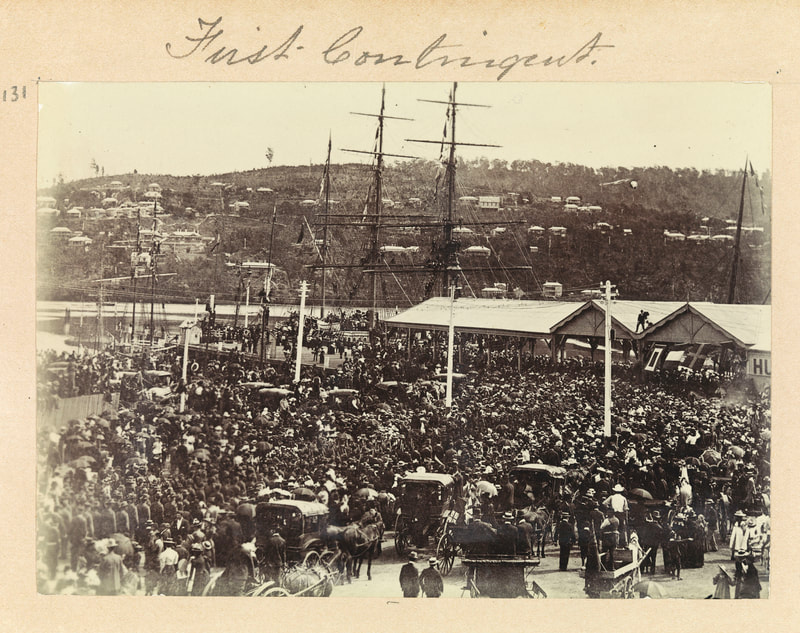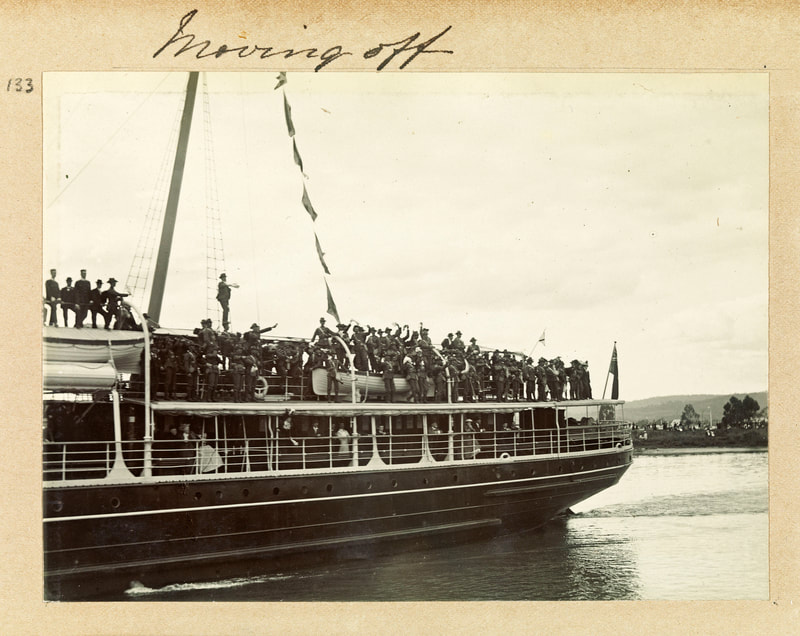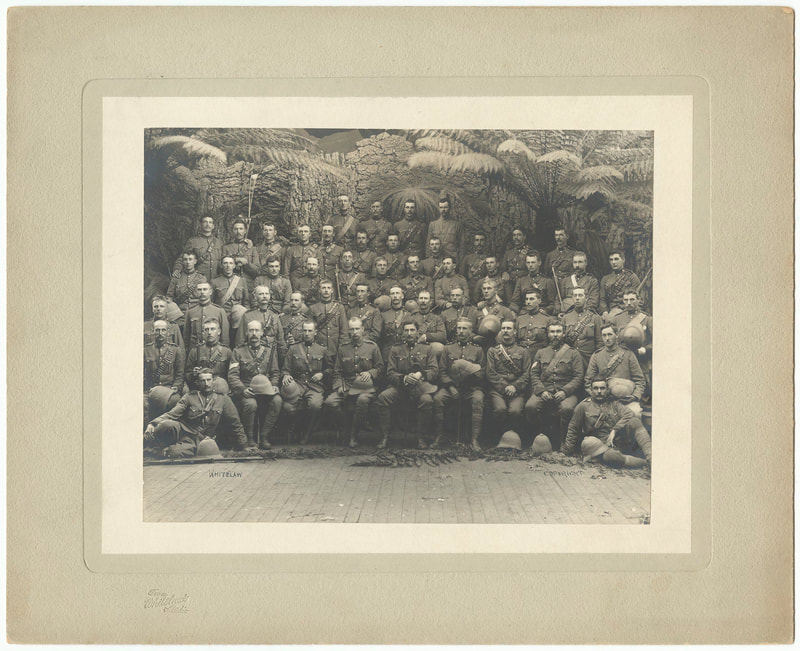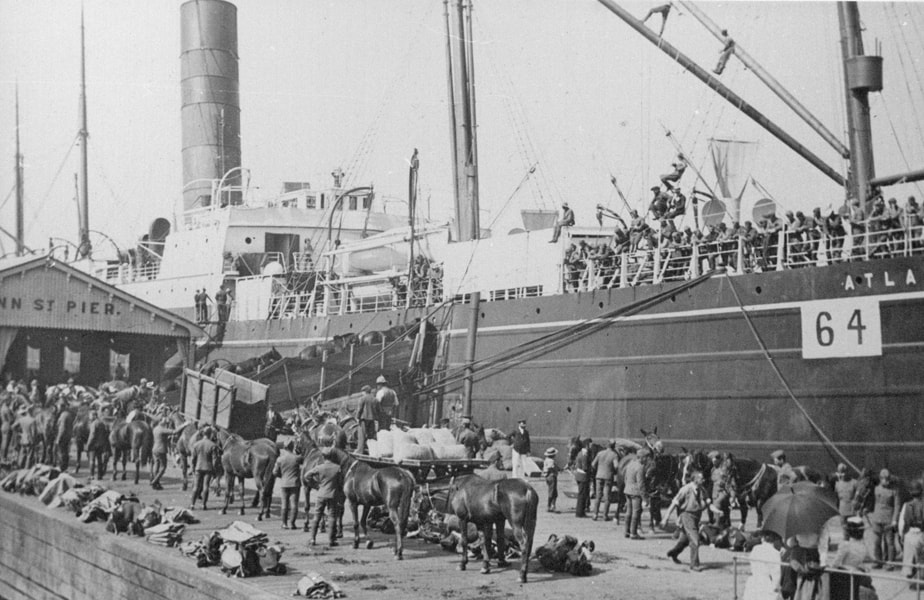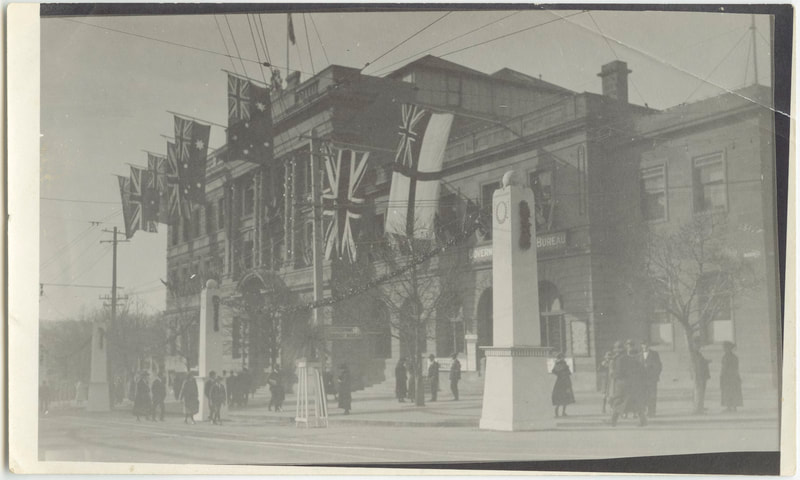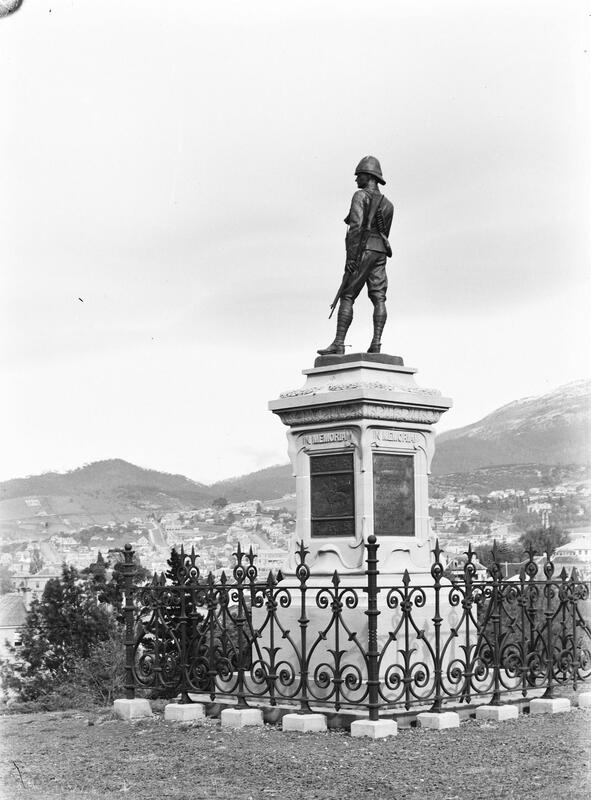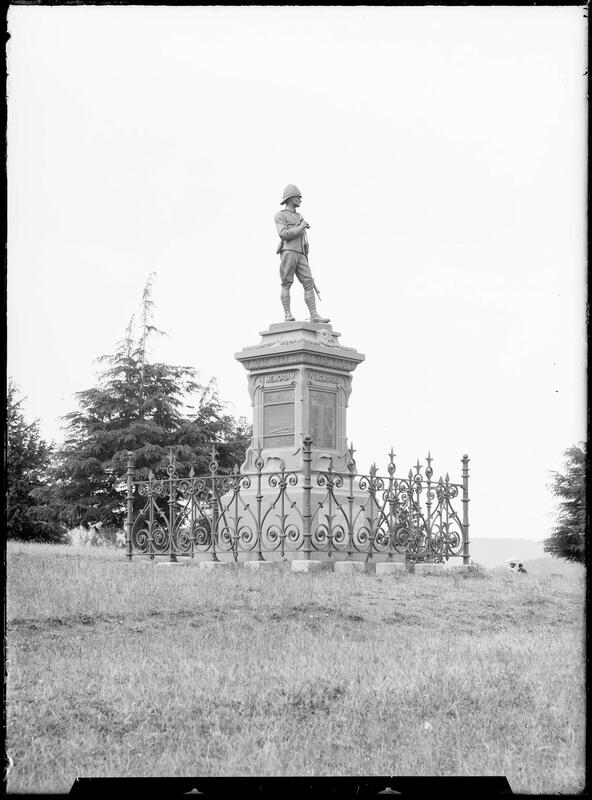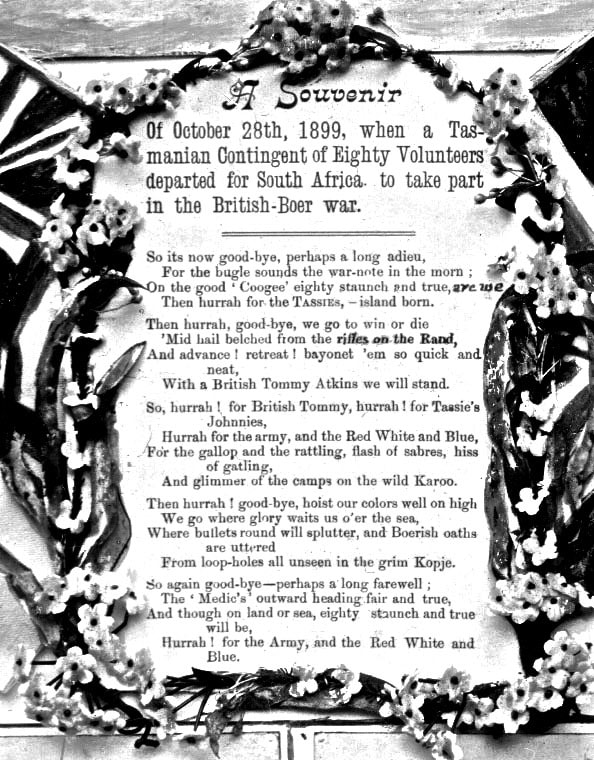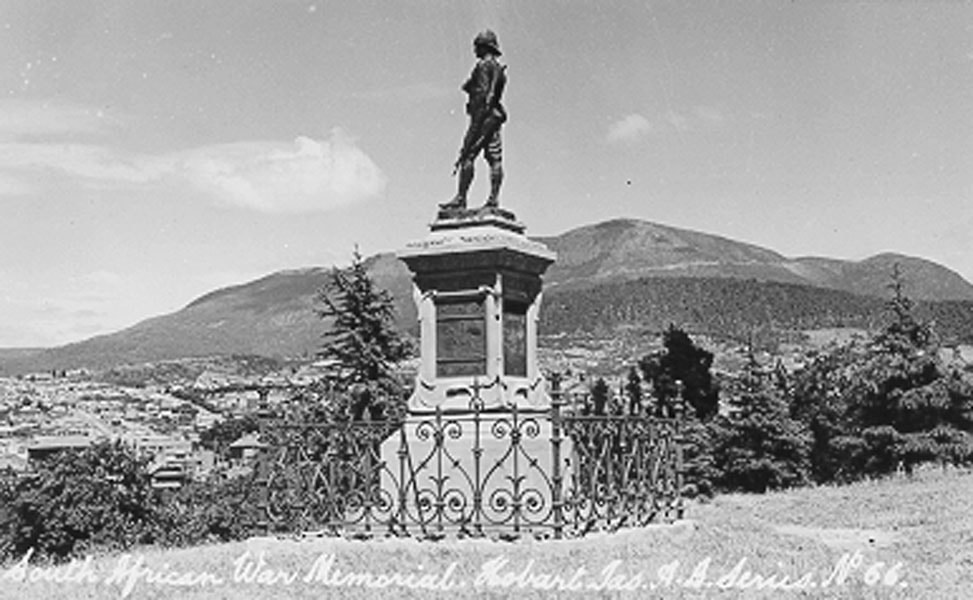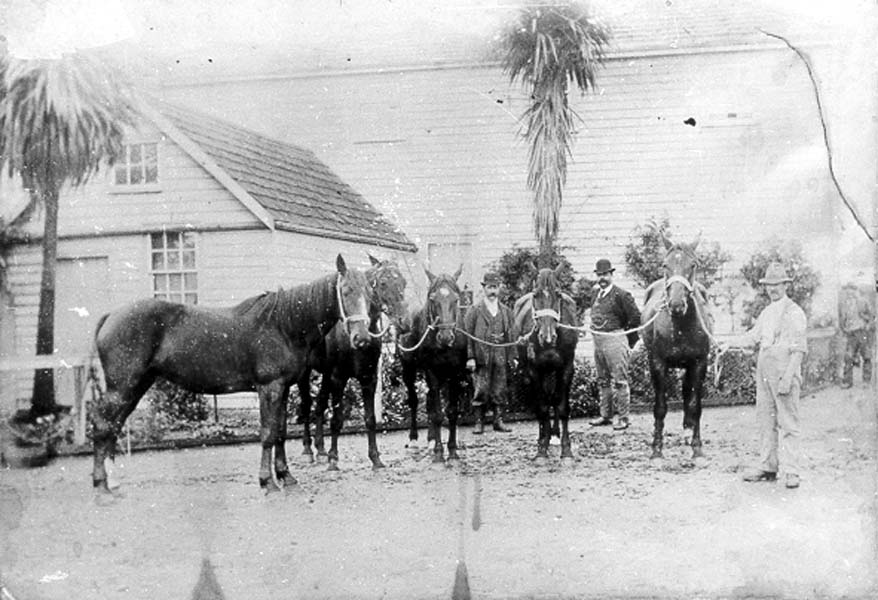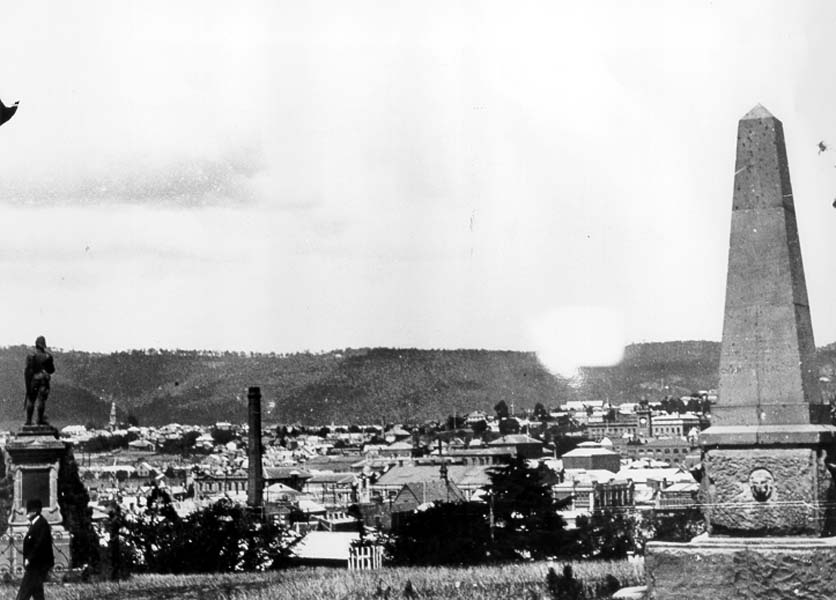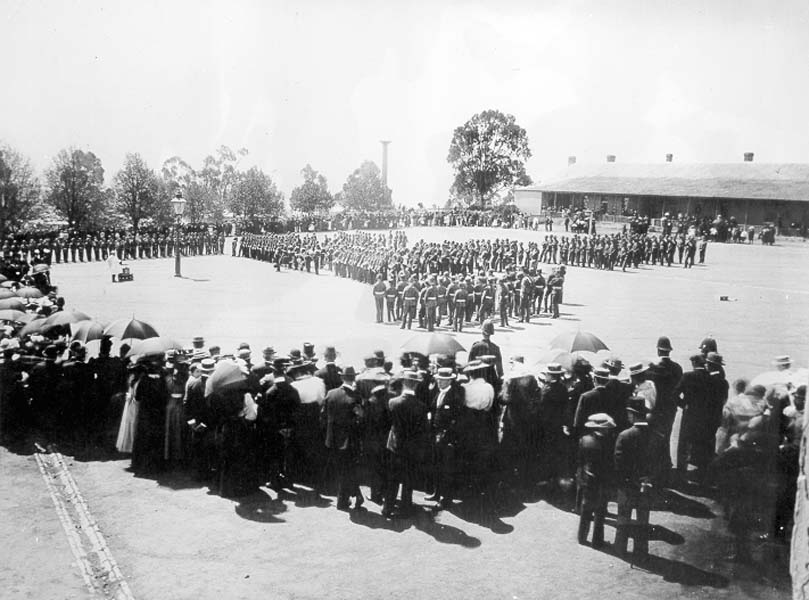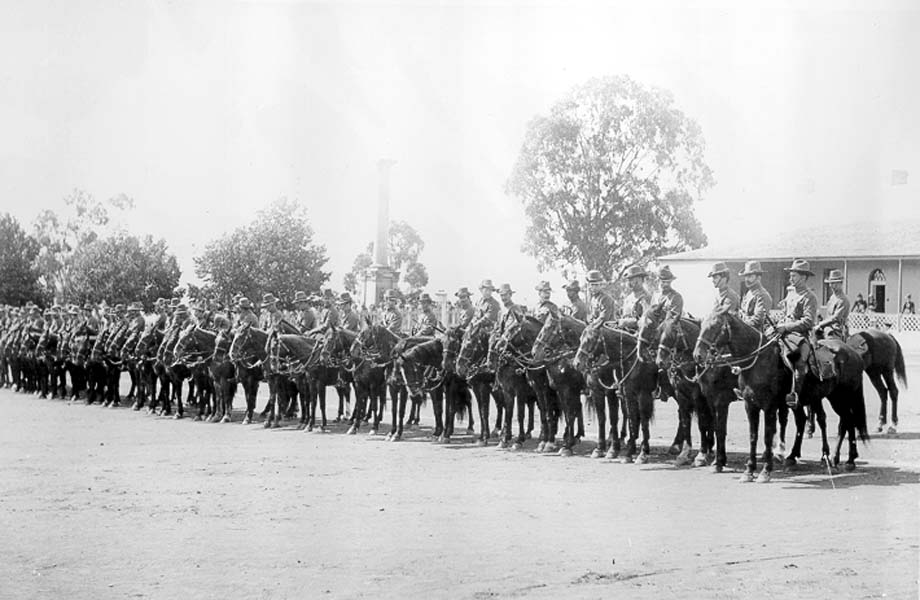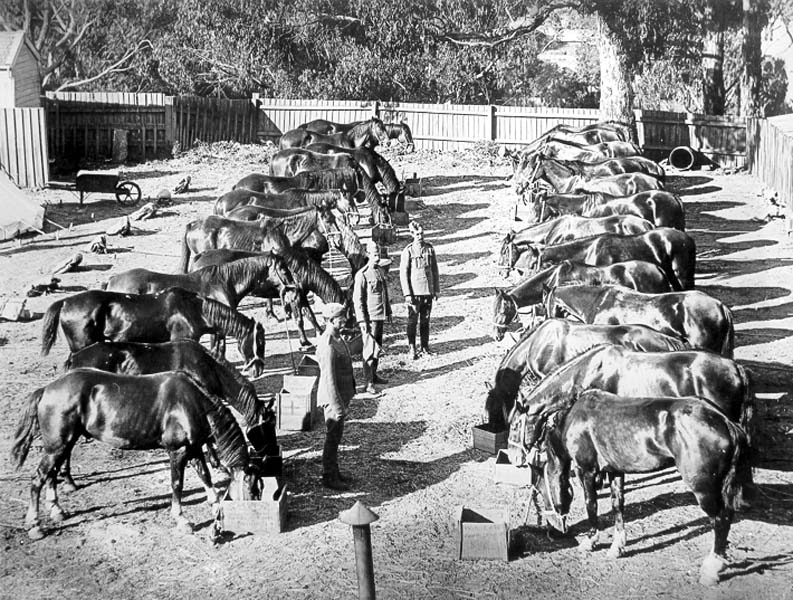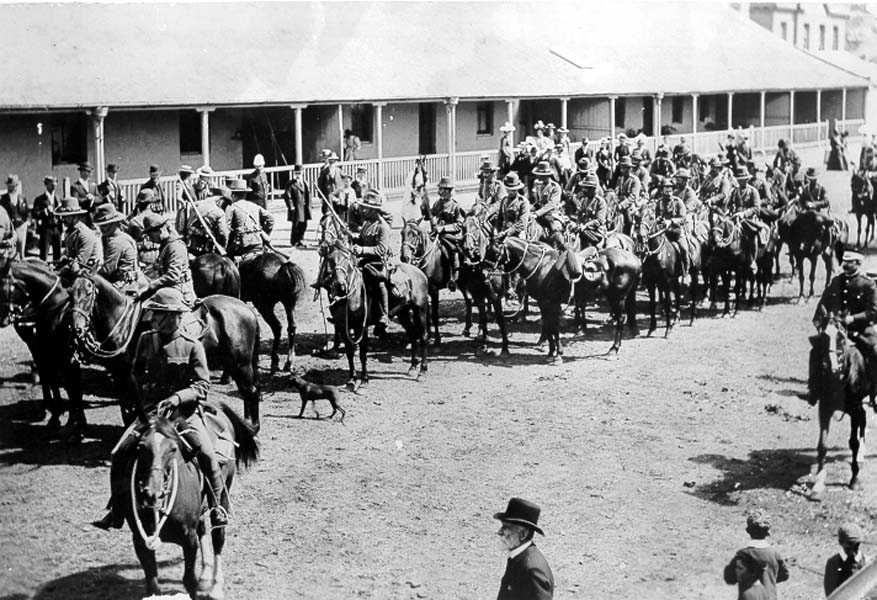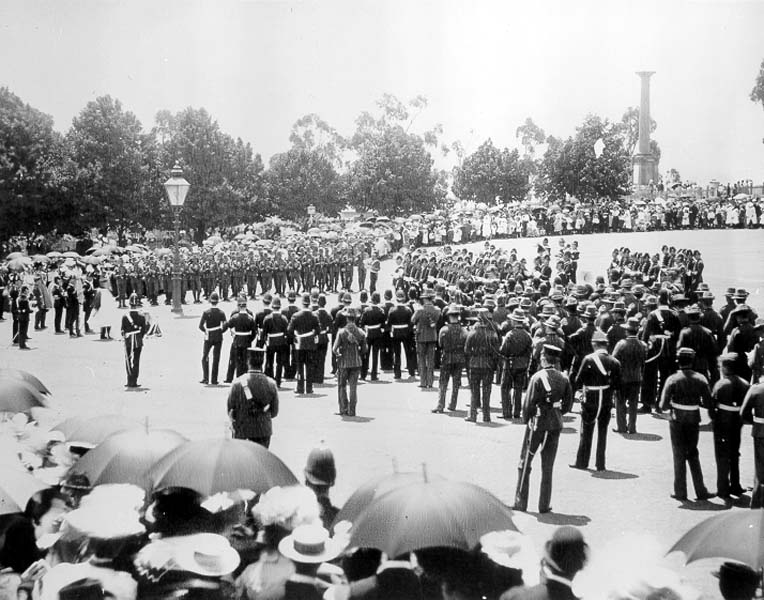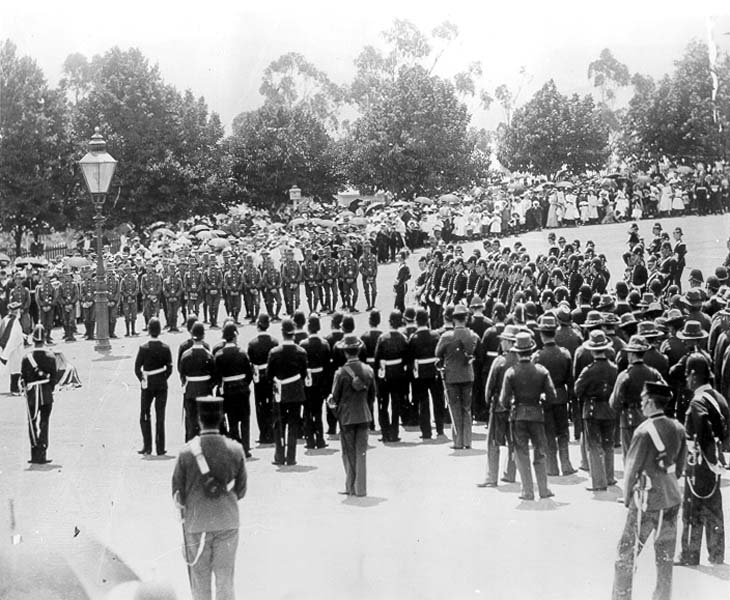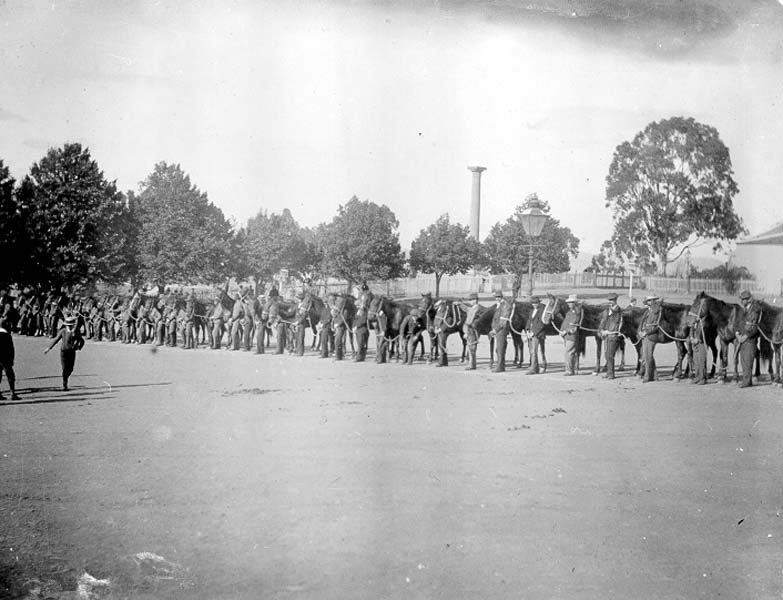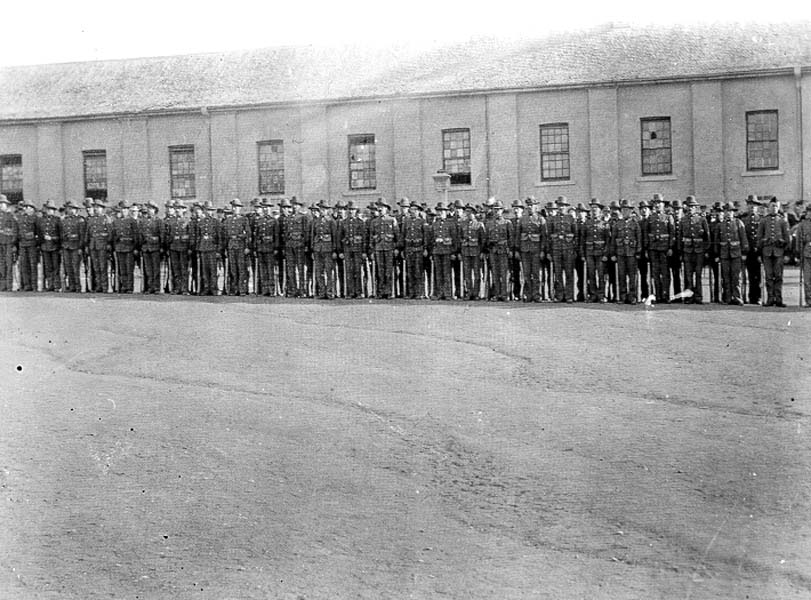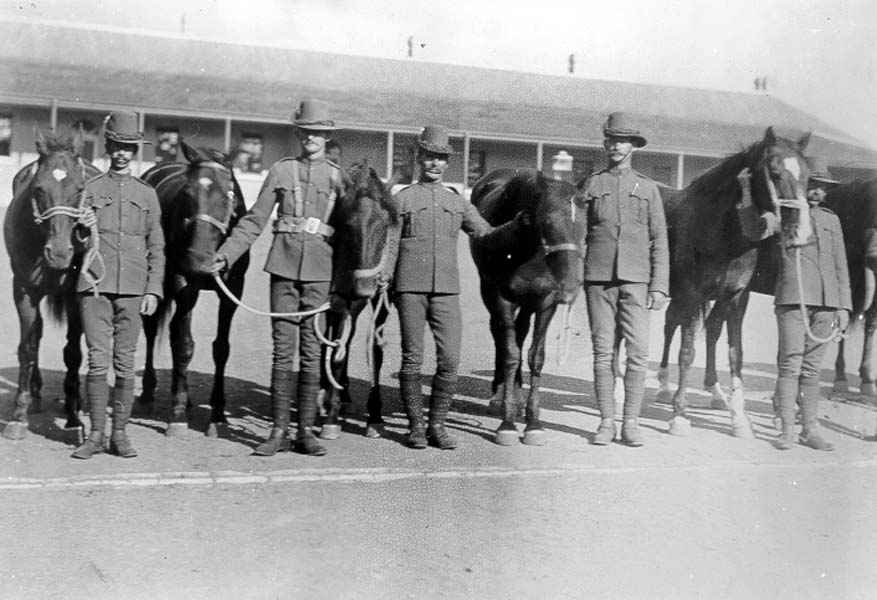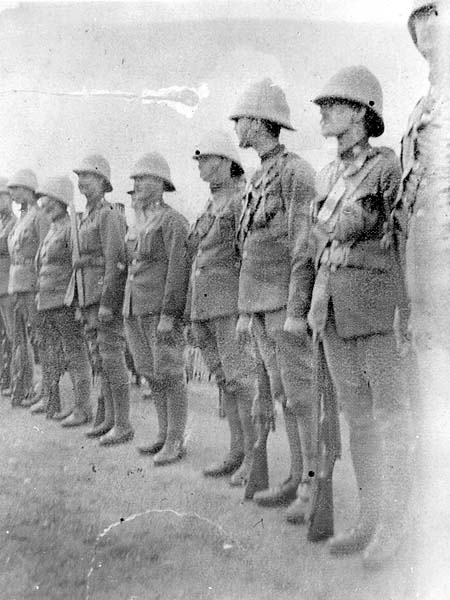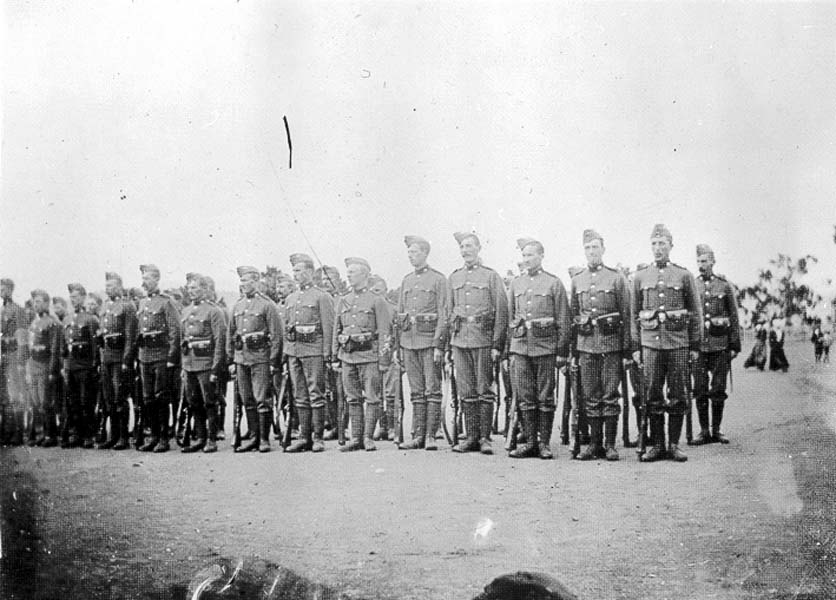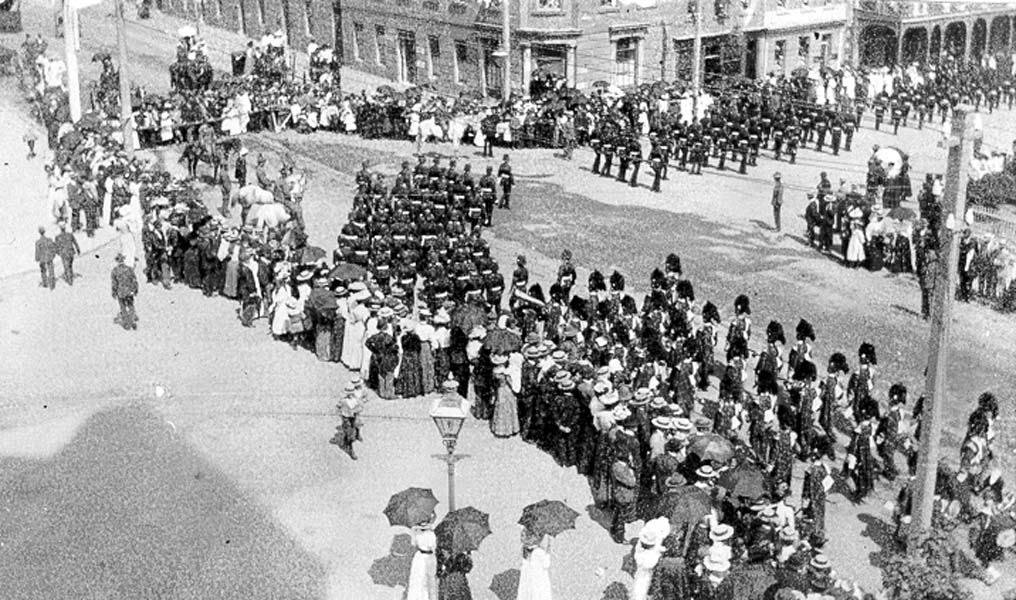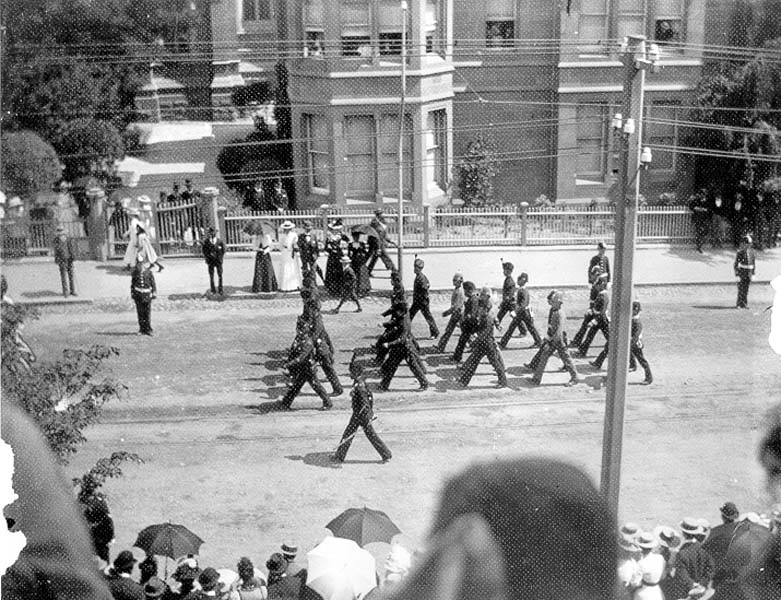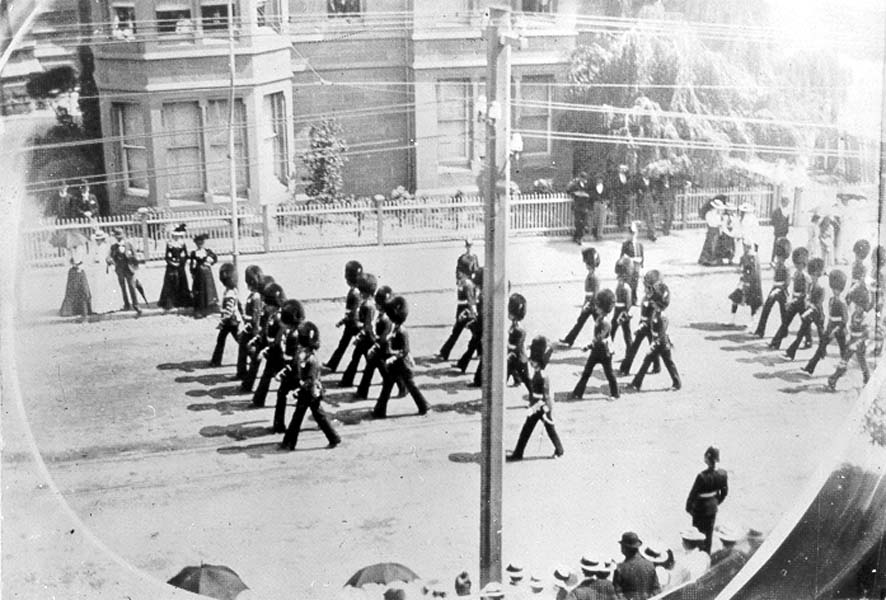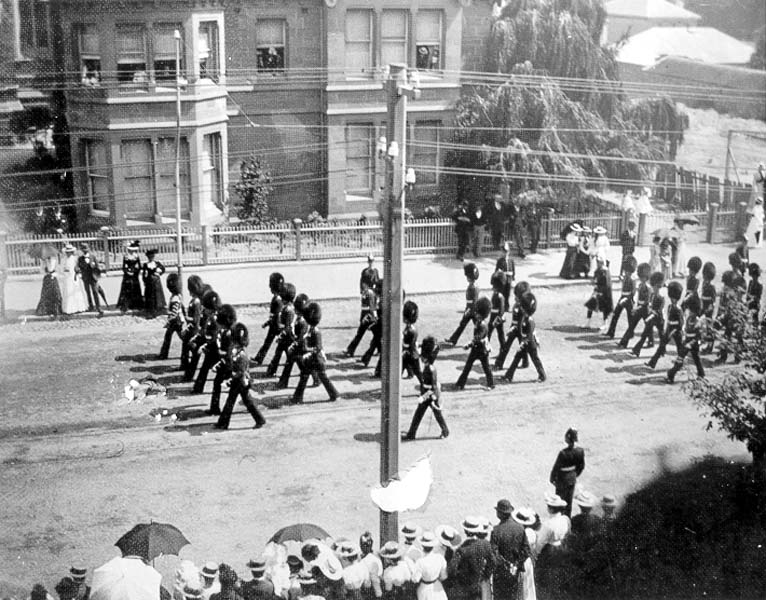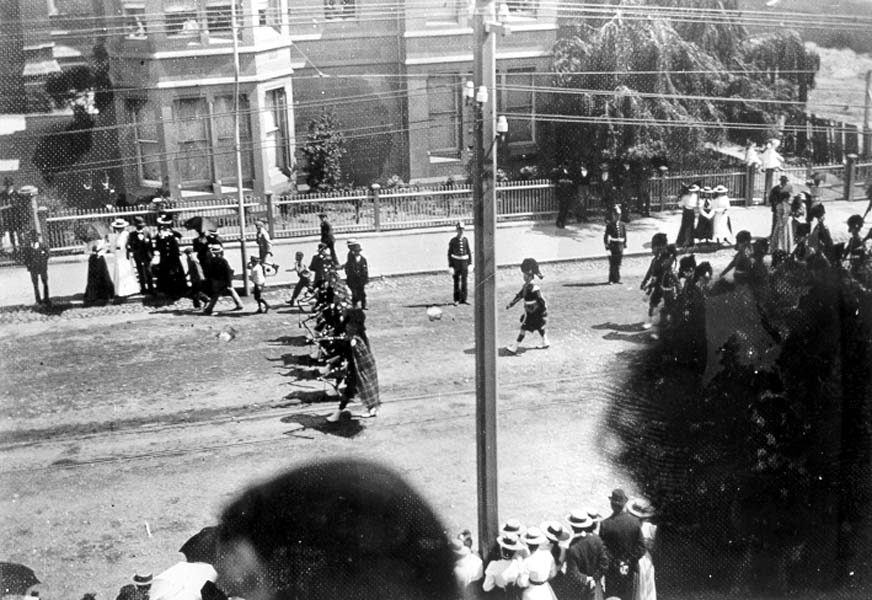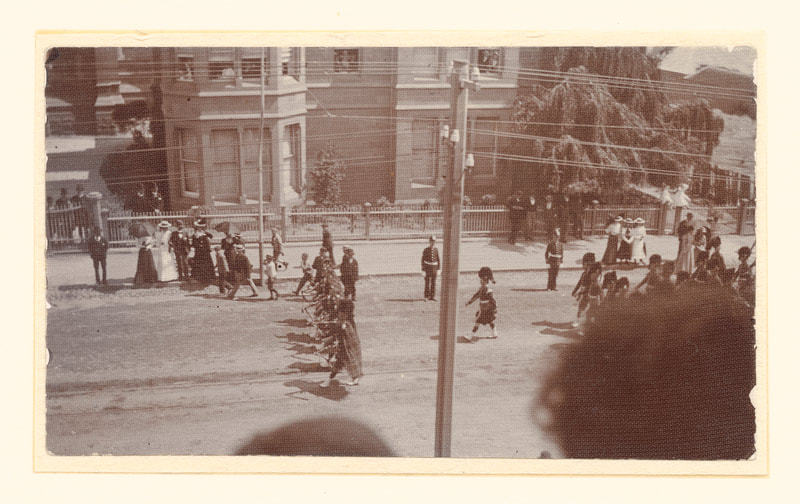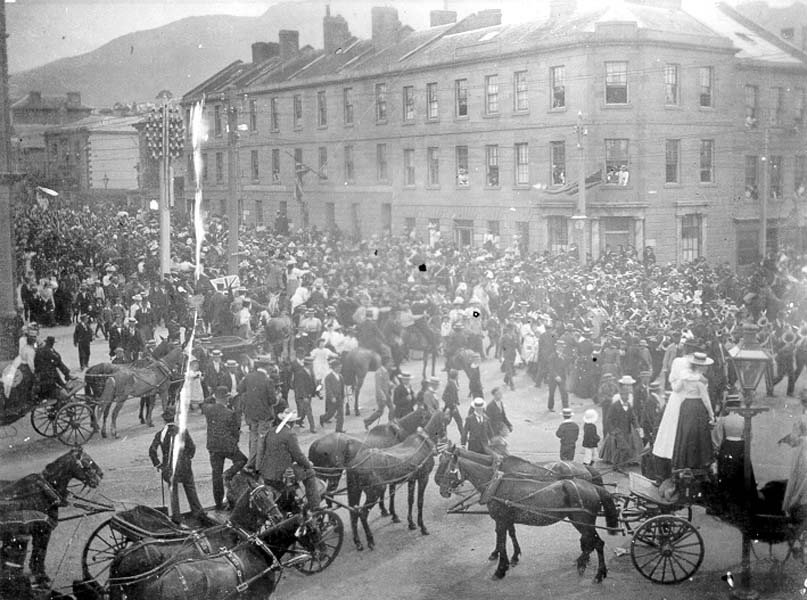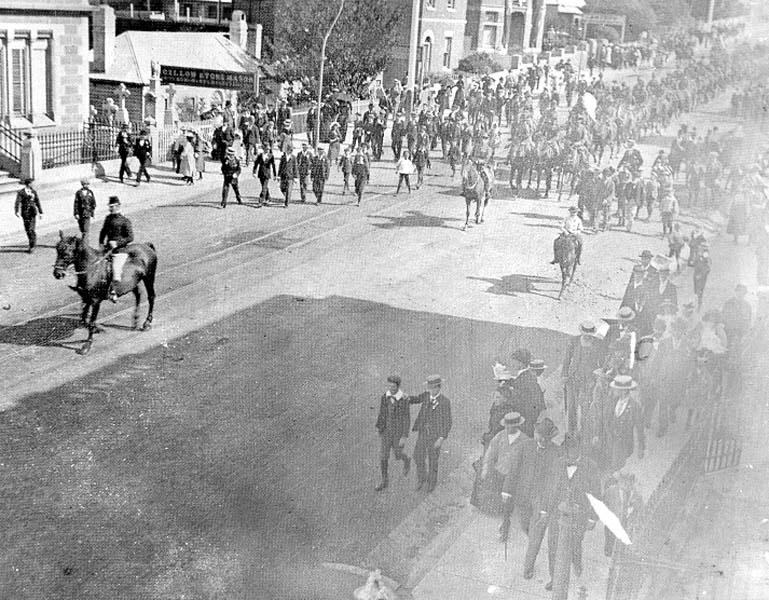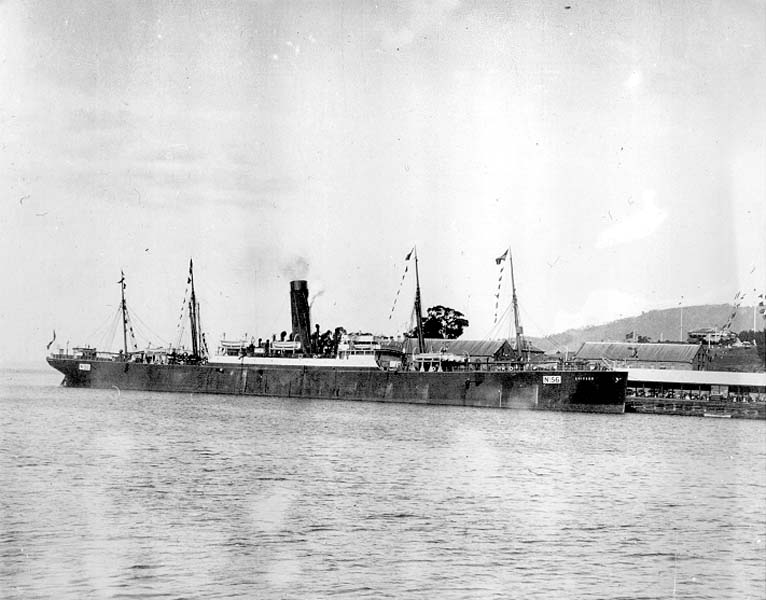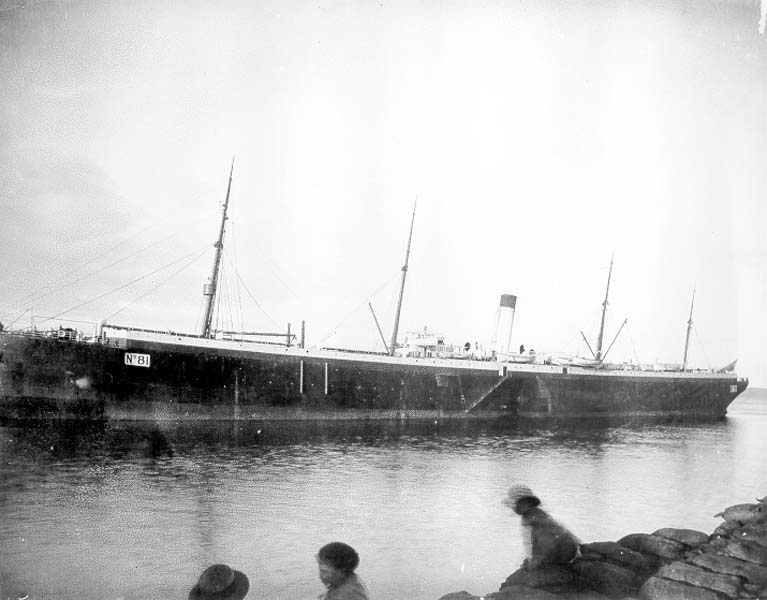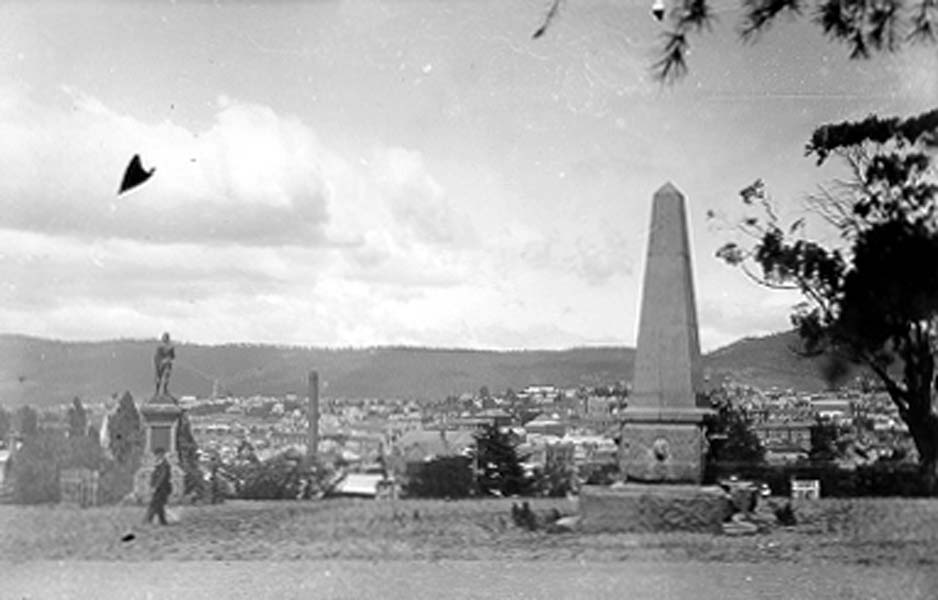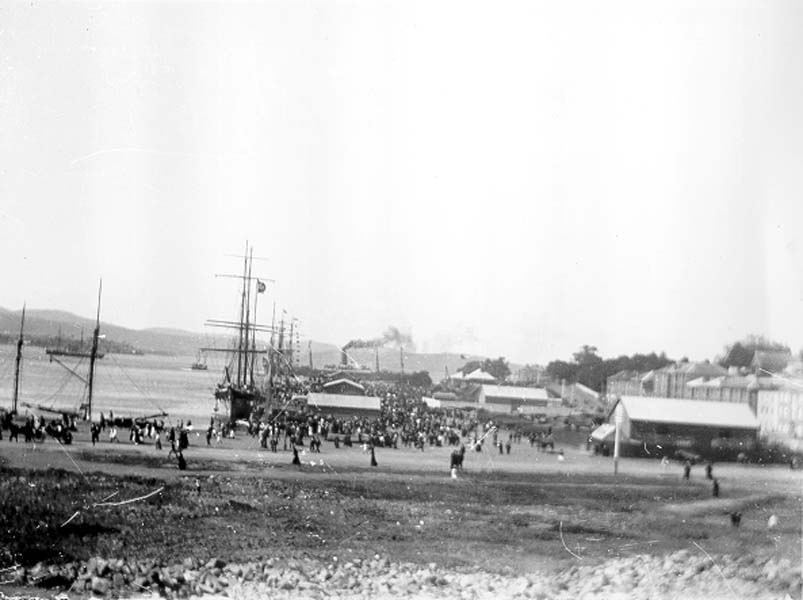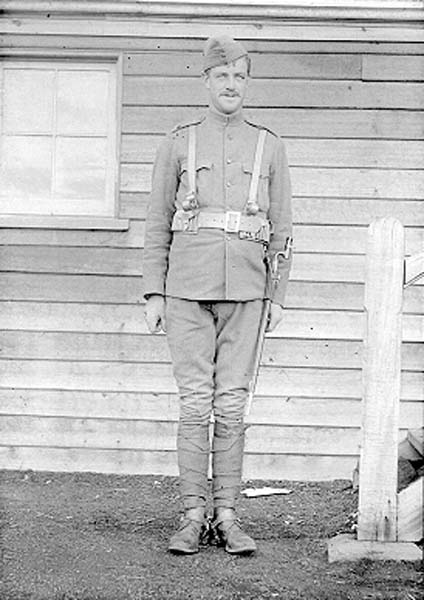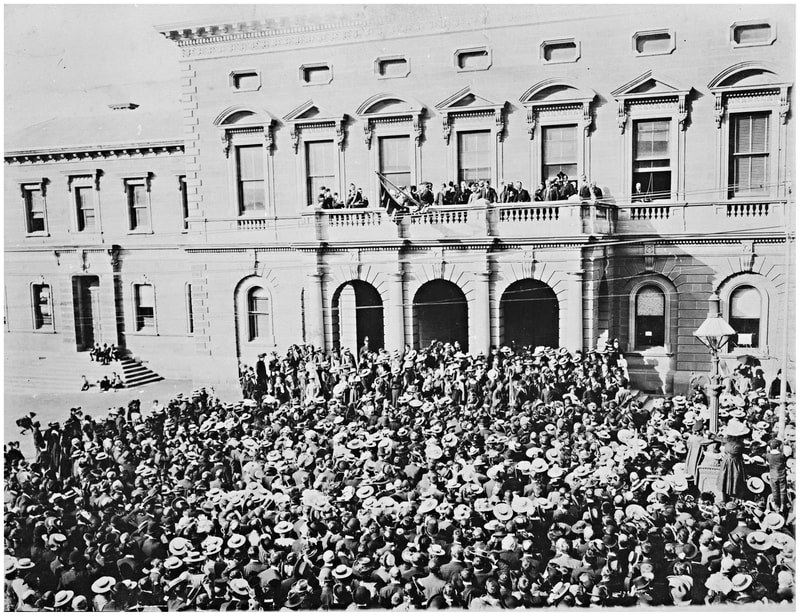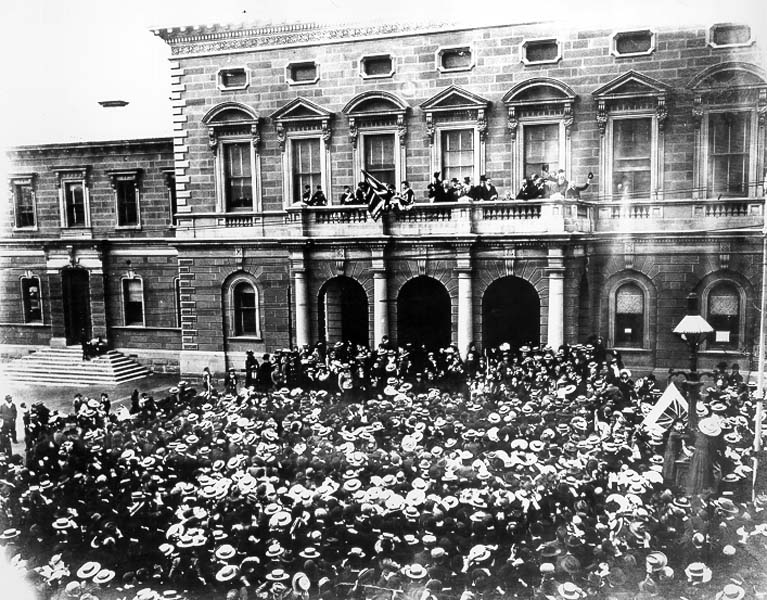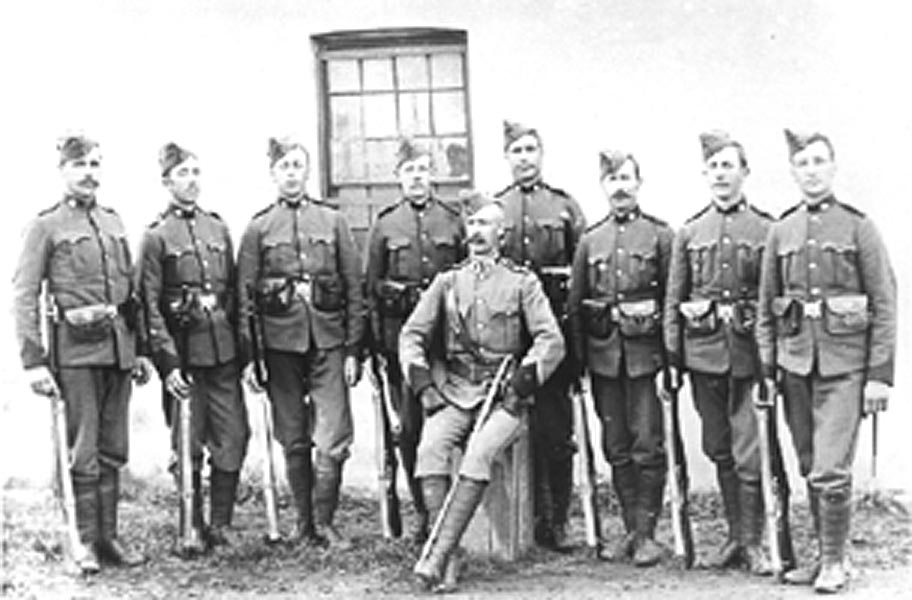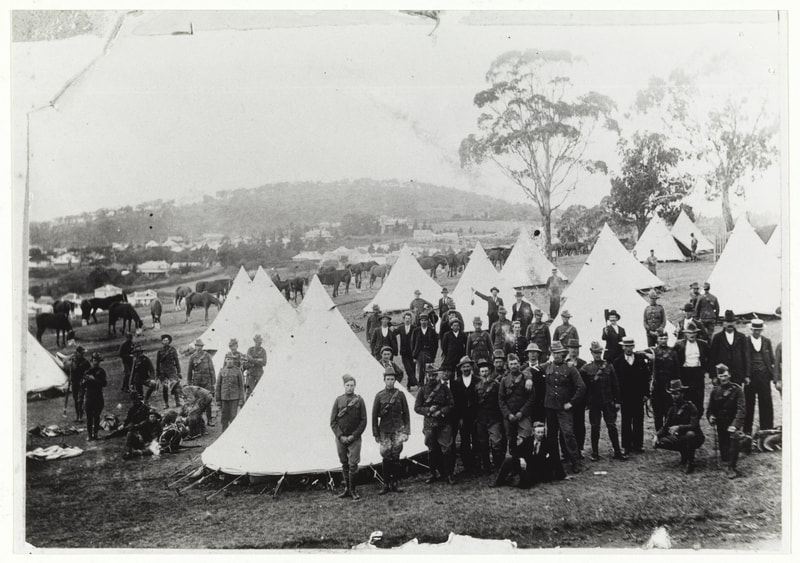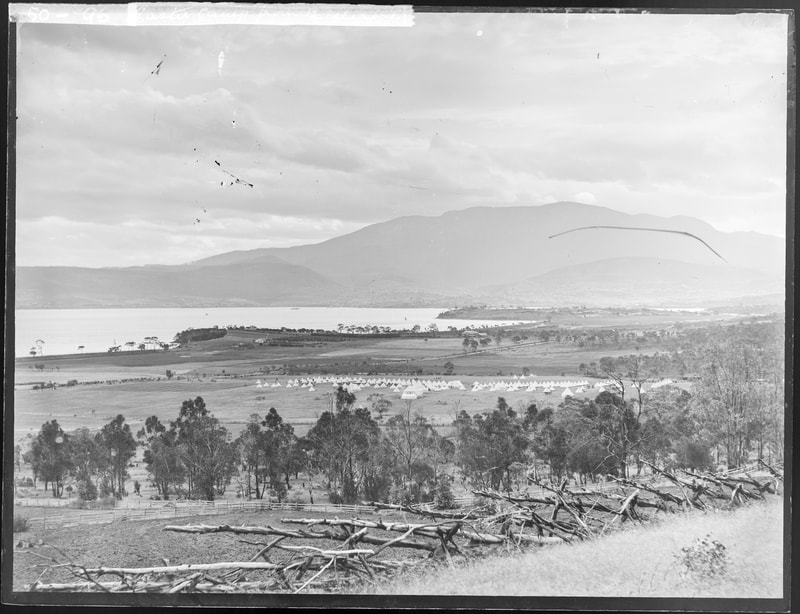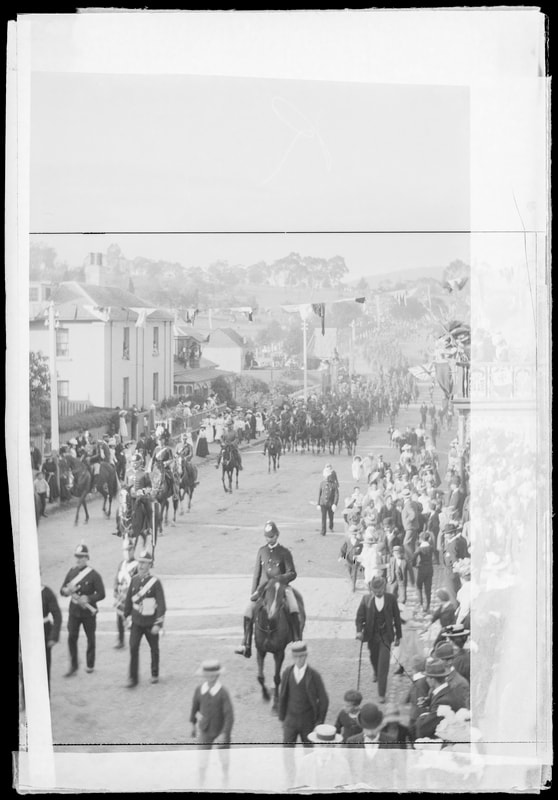1905: The Boer War memorial was built and placed in a very important position in Hobart. The entrance to Hobart.
Hobart has changed. The Boer War memorial is no longer in a prominent position. It is now bypassed by numerous cars without a sideways glance.
A square sandstone base with decorative detailing.
Bronze statue of a soldier looking towards Hobart’s waterfront. He watches the troops going and returning.
A steel forged fence of decorative iron.
1901: Foundation stone was laid by the Duke of Cornwall and York. Under the foundation stone is a cavity containing the names of all the Tasmanians who went to South Africa. Plaques on the base of the statue have the names of the fallen soldiers.
The sculptor was Benjamin Sheppard Senior. His wife’s brother died in the Boer War.
The statue was sent to London for casting in bronze. The Times (London) reported: “He stands on the alert, his field glasses in one hand and his rifle in the other, a fine type of the young manhood of the colony who came forward so readily to help the mother country and the Empire.” The statue returned to Hobart on the SS Papanui in January 1905, and placed back on the memorial.
What we call the Boer War was the Second Anglo-Boer War and went from October 11 1899-May 31 1902. It was fought between the British Empire and two independent Afrikaner Republics. Boer is an Afrikaans word meaning farmer. The war began when diamonds and gold were found in the Republic of Transvaal and the Orange Free State. The war involved trench warfare, concentration camps and guerrilla warfare. The British Empire was more powerful and eventually won.
When the Boer war began Tasmania was a self-governing British Colony. Within a fortnight of the declaration of war, Tasmania sent troops, enthusiastically. When the war ended Tasmania was a state of Australia.
During the Boer War Federation occurred and Queen Victoria died. The Victorian age ended and Australia began.
Two Tasmanians received the Victoria Cross in the Boer War. They fought as Tasmanians not Australians.
The Boer war was fought on horseback. Today the memorial is dominated by a continuous stream of cars. Not many horses go anywhere near the memorial.
An estimated 39/40 Tasmanians lost their lives during the South African conflict. All but one/two were buried in South Africa. One buried here is Hodgman, who is an ancestor of the famous Hodgmans.
860 Tasmanians served and about 800 horses also served. The majority of men returned. All the horses remained in South Africa.
Hobart has changed. The Boer War memorial is no longer in a prominent position. It is now bypassed by numerous cars without a sideways glance.
A square sandstone base with decorative detailing.
Bronze statue of a soldier looking towards Hobart’s waterfront. He watches the troops going and returning.
A steel forged fence of decorative iron.
1901: Foundation stone was laid by the Duke of Cornwall and York. Under the foundation stone is a cavity containing the names of all the Tasmanians who went to South Africa. Plaques on the base of the statue have the names of the fallen soldiers.
The sculptor was Benjamin Sheppard Senior. His wife’s brother died in the Boer War.
The statue was sent to London for casting in bronze. The Times (London) reported: “He stands on the alert, his field glasses in one hand and his rifle in the other, a fine type of the young manhood of the colony who came forward so readily to help the mother country and the Empire.” The statue returned to Hobart on the SS Papanui in January 1905, and placed back on the memorial.
What we call the Boer War was the Second Anglo-Boer War and went from October 11 1899-May 31 1902. It was fought between the British Empire and two independent Afrikaner Republics. Boer is an Afrikaans word meaning farmer. The war began when diamonds and gold were found in the Republic of Transvaal and the Orange Free State. The war involved trench warfare, concentration camps and guerrilla warfare. The British Empire was more powerful and eventually won.
When the Boer war began Tasmania was a self-governing British Colony. Within a fortnight of the declaration of war, Tasmania sent troops, enthusiastically. When the war ended Tasmania was a state of Australia.
During the Boer War Federation occurred and Queen Victoria died. The Victorian age ended and Australia began.
Two Tasmanians received the Victoria Cross in the Boer War. They fought as Tasmanians not Australians.
The Boer war was fought on horseback. Today the memorial is dominated by a continuous stream of cars. Not many horses go anywhere near the memorial.
An estimated 39/40 Tasmanians lost their lives during the South African conflict. All but one/two were buried in South Africa. One buried here is Hodgman, who is an ancestor of the famous Hodgmans.
860 Tasmanians served and about 800 horses also served. The majority of men returned. All the horses remained in South Africa.
